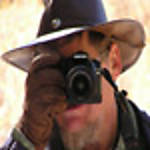 |
Radio Control |
The tank is fully radio controlled. There are 2 receivers within the tank operating on the same frequency but different channels. The receiver in the hull controlling the drive, turret turning, lights, horn, hull mg firing/strobe, working smoke canisters, the camera and the taped music. The second receiver in the turret controls gun elevation and depression, main gun firing (with 2 safety features) and the mg firing/strobe. Both receivers are powered by BECs and with their own independent power supply. Using this method on the very rare occasions it may be necessary to remove the turret (to remove the fired blank cases) there are no connections to break.
 |
Thoughts on the 1:1 T34-85 |
It is hard to describe the indescribable. The overall quality of the tanks other than some post war versions is so, so crude. The welding is atrocious; armour plate cut by torch are left with burnt edges and where a hole for a bolt does not line up the hole was made bigger until the bolt fitted! The down side is that they were basic to extremes; there is very little consideration for crew comfort or for that matter survivability.
The up side is they worked very, very well, they were easy to maintain, uncomplicated, reliable (after the initial problems), easy to fight, produced in their tens of thousands and most importantly, blew great big holes in German armour. The T34 engine although directly copied by the Russians from a pre-war FIAT engine could not be reproduced by the Germans who fought the entire war with highly inflammable petrol engines powering their tanks. Being diesel, the T34 ran on an easier to produce fuel which could be reasonable safely carried externally and the tank was less likely to burn when hit.
A US Army report on the T34-85 after the war describes it ‘with difficult and rough steering, difficulty in gear changing, a lack of crew comfort, excessive noise, lacking a turret basket, poor fire fighting equipment’ and many other negative points. It does however go on to say that the crude exterior finish is countered by precision machining of functioning parts and in some areas, better than those in use in the then American tanks.
Although official figures differ, some 44,000 T34-85 were produced by the USSR between 1944 and 1950. A further 4,572 versions were produced by other Warsaw Pact counties between 1951-1956. The tanks saw action after World War 2 in places such as Korea, Egypt, Angola, and Ethiopia and most recently in the Balkans. Although later versions were of a better quality and upgraded to include IR etc., they were still the basic T34-85 from 1944.
|
| Project Photos

The speed controllers. Outstanding.Each rated at
40 amps (the whole controller, not just the FET's) and 50 amps if
watercooled. UK manufacturer.

The RC in position and awaiting wiring.

Figure added.
|
|














